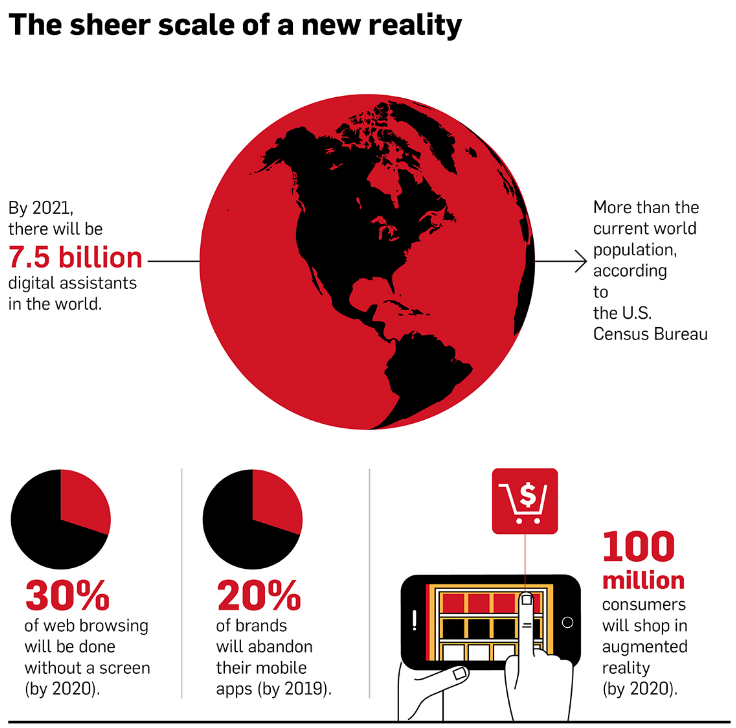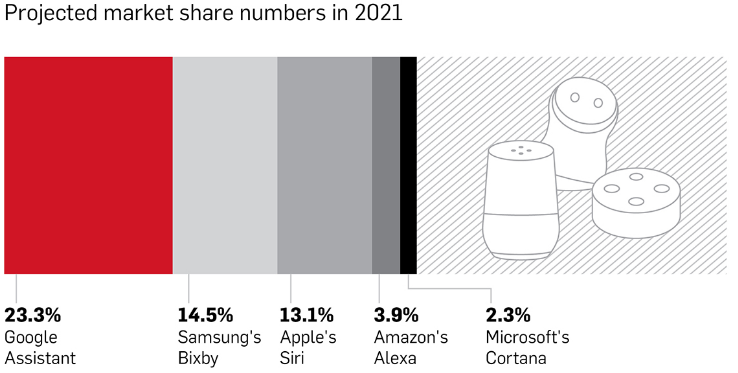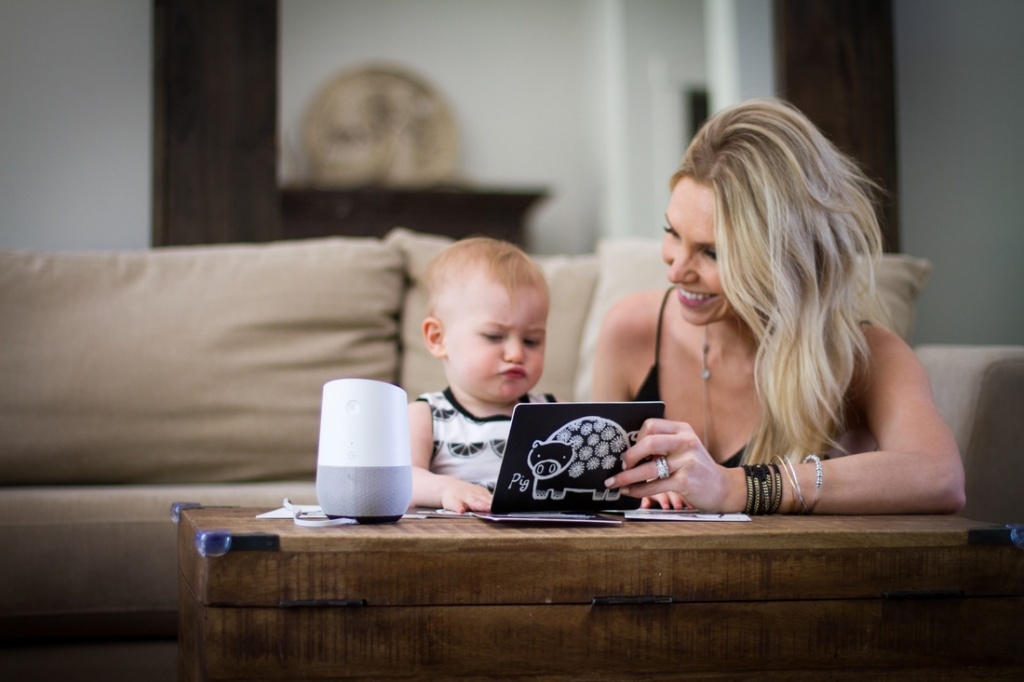The popularity of Alexa and Google Home are making voice technology a game changer in our daily lives and marketing opportunities. That voice in your head may soon turn on your toaster oven. As the IoT (Internet of Things) makes it’s way into our lives, even the simplest of tasks may be controlled by our voice commands. Whether this is a fad or the way of the future does not matter, it is coming – it’s here. Voice technology and digital assistants are about to change our lives.

Voice technology and digital assistants have crossed paths in the form of Alexa and Google Home. This past holiday has sealed the fate of our desire for robots. I think because it provides a feeling superiority, being able to tell another object to do something, and it understands, and it performs that task. While voice commands and digital assistants have a long way to go, they have made big leaps with machine learning.
 Be my friend
Be my friend
All the advances in AI mean that the possibilities of a voice-activated world are finally becoming a reality, according to Speak Easy, a study conducted by J. Walter Thompson, Kantar and Mindshare. The emotional attachment to new people albeit, a mechanical robot is real. A recent study suggested that people will become more emotionally attached to their assistants as advances in machine learning continue. “As people, we crave intimacy, and the ability to forge more personal connections through voice is very apparent,” says Ida Siow. “A third of regular voice users in Singapore have admitted to having a sexual fantasy about their voice assistant, which demonstrates just how easy it is to anthropomorphize this form of AI technology. It’s just easier to connect with voice.”
Marketing a Voice
So what does this mean for companies looking to tap into the voice business? It could be a $50 billion a year market by 2020. According to comScore, 200 billion searches per month will be done with voice by 2020. This creates a $50+ billion per year market opportunity around voice search. As demand for voice intensifies, so will the demand for accessories, devices for the Home, ad revenue, and shopping opportunities (which Amazon already owns the space.)
The Speak Easy study also stated that “…when people voiced a question involving a brand name, their brain activity showed a significantly stronger emotional response compared to people typing that same question.” Ida continues.
“There is no doubt that voice builds emotional affinity, and a resounding 72% of users wanted brands to have unique voices and personalities for their apps. The implication for brands is huge – it’s no longer just about right time, right message, right place – brands need to ensure they are developing the right voice too.”

Future Me
So, where does this all lead us in the future of voice? Here’s what some of the digital minds of today think about voice?
Peter T. Boyd, President & Founder of PaperStreet
“Star Trek style full conversations where the computer interacts with the user and can control technology. Everyone can have a personal assistant to get routine tasks done, items purchased, calculations made, and control devices in your office, home and car. With that will be security concerns in being able to mimic voices and break-into various devices, but they can probably be overcome with additional security in other ways (pass codes or other body signatures).”
Others are not so optimistic. Steve Kovach says it’s time to admit digital assistants are overrated:
“The hype around digital assistants is real. But for now, it’s just that. Hype. And it’s arguably the more overrated than any other emerging technology…digital assistants have turned into a fragmented mess and they’re all little more than a minor convenience, assuming they work at all.”
Regardless of whether you think it’s a fad or a mainstay in the populous, it is on the way. What might be the practical use of voice commands now?
 Top tasks voice controls are made for:
Top tasks voice controls are made for:
- Voice will be a primary interface for the connected home, providing a natural means to communicate with alarm systems, lights, kitchen appliances, sound systems and more, as users go about their day-to-day lives.
- Major cars on the market will adopt intelligent, voice-driven systems for entertainment and location-based search, keeping drivers’ and passengers’ eyes and hands free.
- Audio and video entertainment systems will count on naturally spoken voice for content discovery to match the multitude of ways users think about content. (This can already be seen in products like the new Apple TV, which rejects any apps whose core functionality doesn’t support the voice-controlled Siri remote.)
- Small-screened and screenless wearables will continue their upward climb in popularity, requiring smooth, fluid means of operation as more and more users expect better and better results.
It is expected that voice-controlled devices will also dominate workplaces that require hands-free mobility, such as hospitals, warehouses, laboratories and production plants. As far as I’m concerned, the next big advancement in voice is being able to have a conversation.
Final conversation
Having a conversation with digital assistants will not be easy with so many variations in language, pauses and pronunciations, but this is no doubt the holy grail for Amazon and Google. Amazon wants you to have long, real conversations with Alexa. The e-tail giant recently released new tools to app developers that allow Alexa to whisper, show emotion and pause naturally, like we humans do. And that’s just the start, says Rohit Prasad, Amazon’s head scientist for Alexa, who is playing a key role in the retailer’s efforts in artificial intelligence for Alexa—using computers to converse with us.
The roadmap is set, but the opportunities are wide open. It’s time to get on board with voice. if you want to know how to ramp up, wait for our next post – “OK People, create your voice commands!”